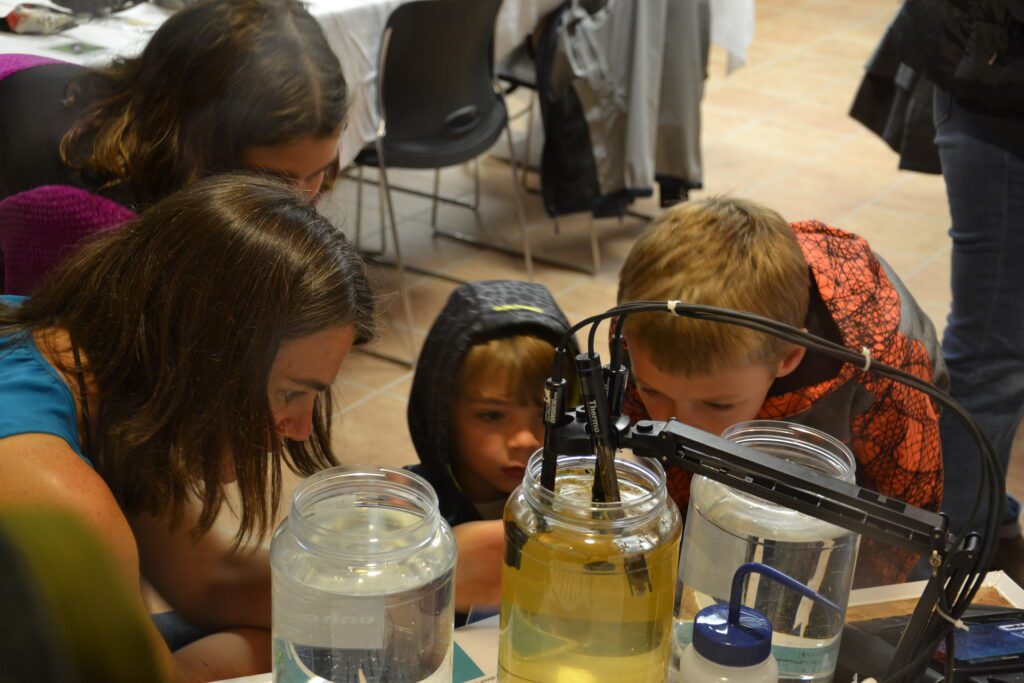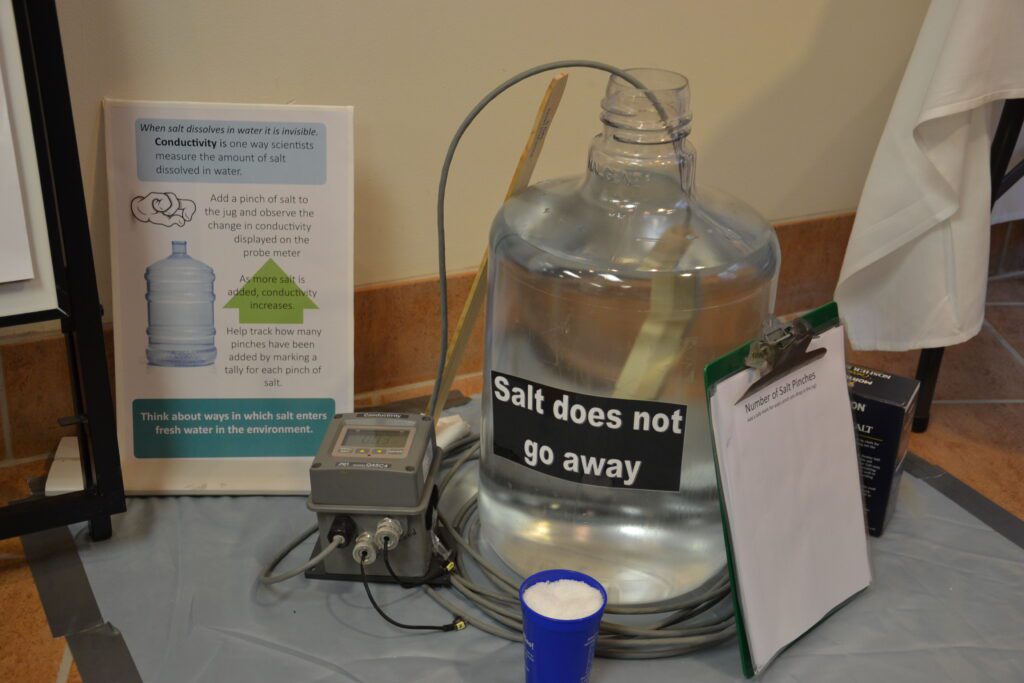Forgoing a water softener isn’t for everyone, but for some, living with a bit of scale might be okay. This #HardWaterHacks blog series is all about debunking myths and providing practical tips for living without a water softener, living with water that’s less softened or using softening alternatives to reduce chloride pollution. Each topic in the series has been researched and written through the personal experiences of District pollution prevention specialist Catherine Harris as she embraces our naturally mineral-rich area groundwater, works to change social norms on home salt use and reduce chloride pollution in natural systems.
Written by Catherine Harris
A couple years ago I learned that water softeners (or more specifically all the salt they use) are bad for the environment. Everyone warned me life would be hard, I would break my house and my hair would be ugly, but I had to find out for myself – is hard water really all that bad? So, I went ahead and disconnected my softener to see what would happen.

A flat-lined iron
When I first unplugged my softener, one of the first (if the only?) thing to actually break was my iron. It started shooting out little white crusty bits whenever I tried to use the steam feature and started leaking out the side – both telltale signs that it had succumbed to scale clogging. Unsure if vinegar cleaning was a good idea, I purchased a new iron. I checked the owner’s manual to see if there was any information about what amount of hardness would be tolerable. Having lived in greater Chicagoland for many years and never having had an iron break there, I assumed some hardness was okay, but clearly not the amount of hardness in the Madison area.
Since the iron only uses a cup or so of water, my first thought was to use bottled water. But, thinking ahead to the winter months with many dress shirts and quilting projects ahead, I decided a few bottles of water wouldn’t last very long after all. Over a longer period, I would need more than a cup but with the guilt of using so many plastic bottles, I started to brainstorm solutions.
In the drink aisle at the grocery store, it hit me – many grocery stores have a place to refill water in your own container and pay by the gallon! A gallon of water would last for more than a year of ironing projects and by using a reusable container, I would avoid using too many plastic bottles.



Not all waters are created equal
When it came time to purchase the water, I was confronted with a large range of different types of water. I had to decode what does each type of labeling really mean.
I used online articles like “The Difference Between Distilled Water, Spring Water, and Purified” and EPA’s “Bottled Water Basics” to help understand which water options contain minerals and which have the minerals removed. These resources were interesting and very illuminating about what you’re actually buying in your bottled water. I had no idea that many bottled waters are essentially tap water from a municipal source. I had always assumed water had to undergo some type of treatment, but learned that’s actually not the case.
Distilled water
Steam from boiling water is recondensed to remove natural minerals and kill microbes. This type of purified water best for use in small appliances, but not necessarily human consumption.
Purified water
Water is been treated to contain less than 10 parts per million of total dissolved solids and be essentially free of all chemicals. Types of purification can include reverse osmosis (RO), deionization, carbon filtration, etc.
Spring water
Water from an underground aquifer that may or may not be treated. Also called artesian water, ground water or well water.
Mineral water
Ground water that naturally contains at least 250 parts per million of total dissolved solids.
Drinking water
Water from a municipal source, intended for human consumption. Also called tap water.

The key here is getting used to “different waters for different purposes.” Water that is deemed safe or healthy for an iron, is not necessarily the same water that is safe or healthy for drinking. (This is my generalization and should not be considered medical advice.)
#HardWaterHack – Right water for the right job
The “cleanest” water doesn’t always mean the “healthiest” water for each application, so using the right water for the right job is important.
- Best iron-friendly options: distilled, purified and reverse osmosis (RO)
- Keep irons away from: spring, mineral or drinking water
- For countertop gardens: Interestingly, for my small AeroGarden countertop garden plants, spring water is the best choice.
Application at work
My research at home spawned into an outreach demo at the Lussier Heritage Center in Madison. At the event, we encouraged participants to discover “which water is healthiest” between a scoop of water from a pond, a sample of ultra-pure water that might be used in an industrial setting and a cup of drinking water. Participants could dip a portable meter into each sample to measure Ph, conductivity, temperature and dissolved oxygen (DO). It was easy to see that each of the different waters had different characteristics but were all considered healthy and unhealthy for different purposes.



Learn more #HardWaterHacks and ways to reduce salt use at home in the Pollution Prevention section of our website or our blog.






